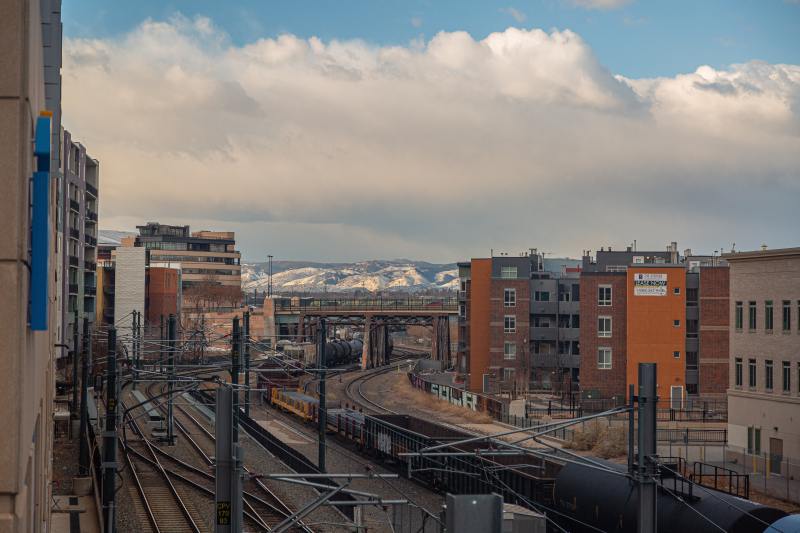Antiquated to Elevated: Overcoming Barriers

This is part seven of the Streetsblog Denver series covering the Elevate Denver General Obligation bond. Every week, we’ll dissect biking, walking, and transit upgrades across the city. We’ll explore the planning aspects behind key projects in addition to considering how these changes will affect the lives of people in the communities where they are located. Read parts one, two, three, and four, five, and six.
Many projects that are being funded by the Elevate Denver bond seek to solve mobility problems that come as a result of the barriers, both physical and political, that exist all over the city. The bridge in Elyria-Swansea and the Alameda Underpass are two major examples of projects that help eliminate barriers which Streetsblog looked into during this series, but there are several more included in the $431 million allocated for transportation projects inside the GO Bond. Some of the most challenging barriers that divide communities inside the city are highways, railroad tracks, busy arterials, and the South Platte River. While these are all elements of our city that are not going away anytime soon, it is integral that communities across Denver have the infrastructure to safely cross these divides without needing to hop in a car. Even with the bond funding secured, money alone cannot solve the problems that these barriers cause. Especially in communities that have historically been given the short end of the stick when it comes to citywide mobility, regulatory conflicts and right-of-way hierarchies only continue to delay the solutions residents are asking for.
Residents of Denver City Council district 7 are all too familiar with these obstacles, as the Platte River, railroad, Interstate 25, and Santa Fe Street all separate the area into different pockets in the City’s southwest. City Councilman Jolon Clark, who has served this district since 2015, has made it a priority to help increase access through barriers, particularly for those walking and biking. “Having grown up in Denver, something that really stuck with me was the disparity among communities that come with the barriers that separate us,” explains Councilman Clark in an interview with Streetsblog. On bridging these divides, Clark says that “These are things that the community just keeps asking for. The catalytic project is always a piece of infrastructure that gets you safely over, under or through one of these barriers.”
Unfortunately, these barriers are both physical and regulatory. In many cases where a barrier needs to be fixed, there are often other factors that can make these infrastructure upgrades incredibly complex. These projects are not just the city trying to work with residents to help solve a problem. There are instances such as the Alameda Underpass where the City, residents, the Colorado Department of Transportation (CDOT), RTD and the railroad companies are all thrown together into a battle royale. “For me,” says Councilman Clark, “the real stakeholders for the projects are all the folks who live in these communities and the obstacles are the various groups that at every turn are trying to slow these projects down.”
Councilwoman Candi CdeBaca of District 9 also shares concerns about the barriers— particularly the railroads—that have cut her district off from other parts of the city. She specifically refers to how in certain parts of her district, one can look out over the railroad tracks and see all the new development going on in RINO, but it is nearly impossible to get there on foot. “You are able to literally stare at Zeppelin Station and not be able to walk there because our streets just don’t go through,” she says in an interview with Streetsblog. In the previous century, interstates and railroads were permitted to bulldoze through areas like Globeville and Elyria-Swansea, cutting them off from the city. To this day finding access, particularly when not in a personal vehicle, is still a challenge.
A particular difficulty for some of the Elevate Denver projects has been working with the railroad companies. “We almost give up before we even try working with them,” says Councilwoman CdeBaca. “When it comes to people and the health of communities, we kind of let the railroads do whatever they want to do instead of figuring out how we are going to safely [co-]exist for the next hundred years.” Councilman Clark also explains how difficult work in his district has been around the main line train tracks because “their utility right is above all else. They don’t have to do anything they don’t want to.” Since 1887, as railroads have been considered integral to interstate commerce, they adhere to Federal regulations which, in most cases, preempt local authority. At the end of the day, railroads are only required to consider the bottom line and the movement of their freight. In Denver, it then becomes the City or CDOT’s problem to ensure that their work will not disturb the railroad’s operations. Representatives from the Union Pacific and BNSF did not respond to requests for comment.
With all of this back and forth between different agencies, residents tend to lose hope in the projects that they know are priorities. Fighting on behalf of a project that might not be finished for years to come is exhausting and can be discouraging for those involved. “Sometimes it feels like nothing but challenges,” says Clark. Particularly with Elevate Denver bond projects, this extensive process of working through regulatory issues can be worrisome, as the funding comes with an expiration date. According to Clark, in order to bring equitable mobility to Denver, it is essential that the city ensures access across barriers a priority. “We have to find ways to overcome these hurdles. It is absolutely transformative when we make these connections between communities and we can’t rest until they are done.”
Share this link with a friend who should get daily walking, biking, and transit news


